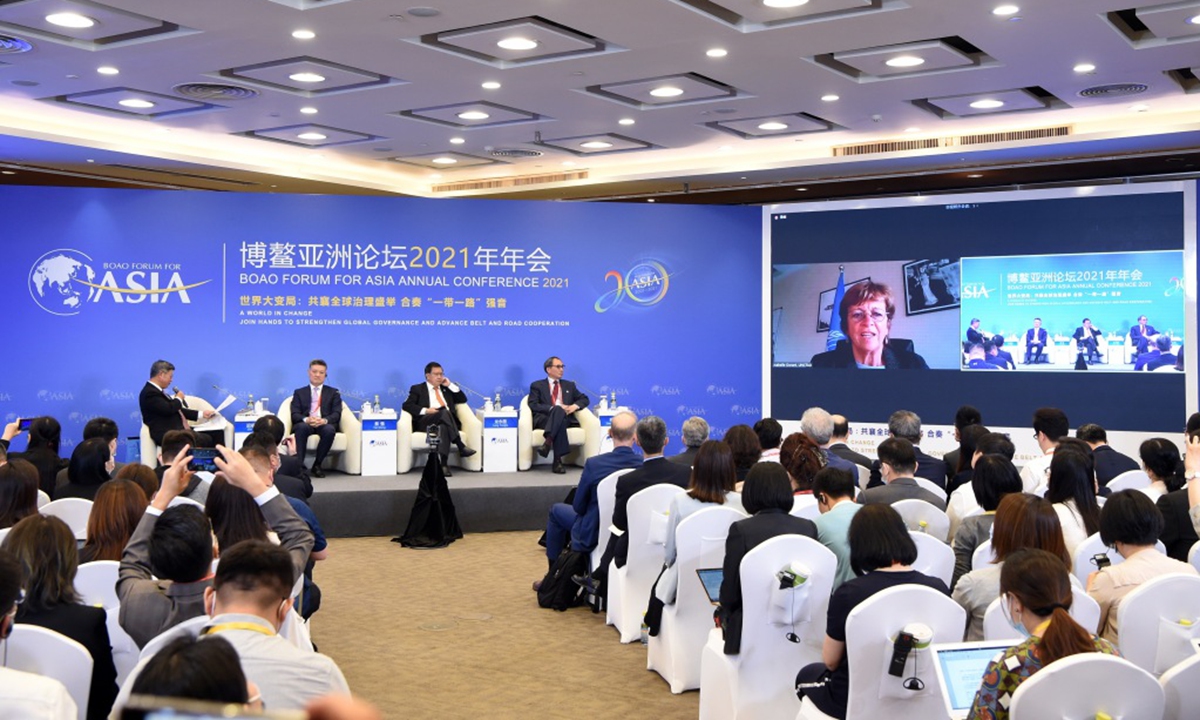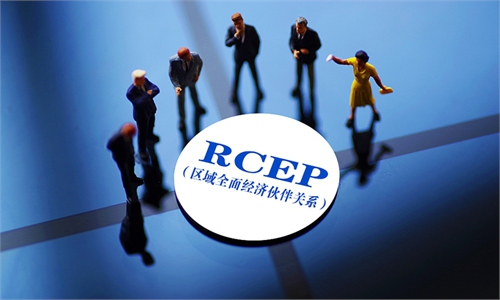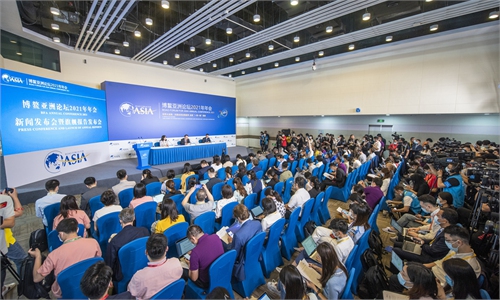RCEP faces challenges as comprehensive China-US competition takes shape: experts at Boao forum
US welcome to join China in pushing free trade in Asia-Pacific: former official at Boao

The 2021 Boao Forum for Asia, themed around "A World in Change: Join Hands to Strengthen Global Governance and Advance Belt and Road Initiative Cooperation," is being held from Sunday to Wednesday this week. Photo: The Paper
The Regional Comprehensive Economic Partnership (RCEP), the world's largest trade deal signed by China and 14 other economies in November 2020, is facing challenges as comprehensive China-US competition has taken shape, officials and experts said at a seminar during the 2021 Boao Forum for Asia (BFA) on Monday.
The 2021 BFA, themed around "A World in Change: Join Hands to Strengthen Global Governance and Advance Belt and Road Initiative (BRI) Cooperation," is being held from Sunday to Wednesday this week.
"The Chinese government attaches great importance to the RCEP, and we have started the relevant implementation preparations. The agreement can also be implemented immediately after it enters into force," Cai Qiang, director-general of the Tariffs Commission at the State Council, the cabinet, told the seminar on Monday.
China has everything in place, and the deal can be signed into effect at any time, Cai said.
So far, China, Singapore and Thailand have finished the ratification process.
The ratification of the RCEP means the economies of the 15 members, which together account for one-third of global economic output, will form a unified, giant market with huge potential and vitality and a total population of 2.27 billion. It is expected to enter into force on January 1, 2022.
From the current point of view of the RCEP, the first step is to gradually move toward zero tariffs among the 15 members, which can greatly accelerate the flow of goods and other elements, and also increase the competitiveness of the entire region, Long Yongtu, former vice minister of commerce and chief negotiator on China's accession to the WTO, told the forum.
Moreover, the combined power of the 15 countries will be integrated through the deal, and is expected to form a strong and competitive industrial chain, which will also be a great impetus to the area as a whole, Long said.
Trade in the region has already accelerated since the deal was signed. According to data released by the General Administration of Customs on April 13, in the first quarter of this year, China's total trade with the other 14 RCEP member states was 2.67 trillion yuan ($410.27 billion), an increase of 22.9 percent year-on-year, accounting for 31.5 percent of China's total foreign trade.
"We hope to use this as a starting point to make the Asia-Pacific region truly become one region with the highest global trade and investment liberalization rules and standards," Long said.
Zheng Yongnian, professor at the East Asian Institute of the National University of Singapore, cautioned that geopolitics now have "too much influence" on world trade, which could pose "great challenges" to the further implementation of the trade deal.
Zheng especially mentioned the impact of the China-US disputes, adding that a "comprehensive China-US competition has already taken shape, no matter whether you like it or not."
"So we have to see the RCEP's economic potential on the one hand and on the other, we need to be realistic and see how to resolve military competition between China and the US," Zheng told the forum.
What China can do is embark on a road that is more open than ever, Zheng said, adding that China's deep opening-up can change the direction of world capital flows and patterns all over Asia.
Long also called for the Biden administration to join China's efforts of pushing multilateral policy and free trade in the Asia-Pacific region, as participation of the US, the world's largest economy, is definitely good news for regional economic integration in Asia - and it will benefit the US economy as well.




